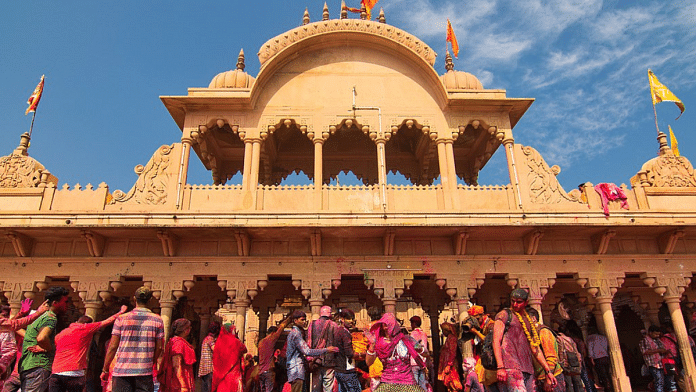Eighty-year-old Maya Devi was set to make history by landing the job that no other woman had in the past—the head priestess of the famous Barsana-based Radha Rani temple, 47 kilometres from Mathura. But just when she started as the first woman priest there in May, so did her troubles.
She is now embroiled in a nasty legal dispute and a family tug-of-war over who has the right to be the priest at the 400-year-old temple, which is regarded as the second most important place of worship in the Mathura region after Banke Bihari Temple. The outcome of this difficult but important battle can potentially change entrenched tradition and monopoly of male priests in the region or can set women back again.
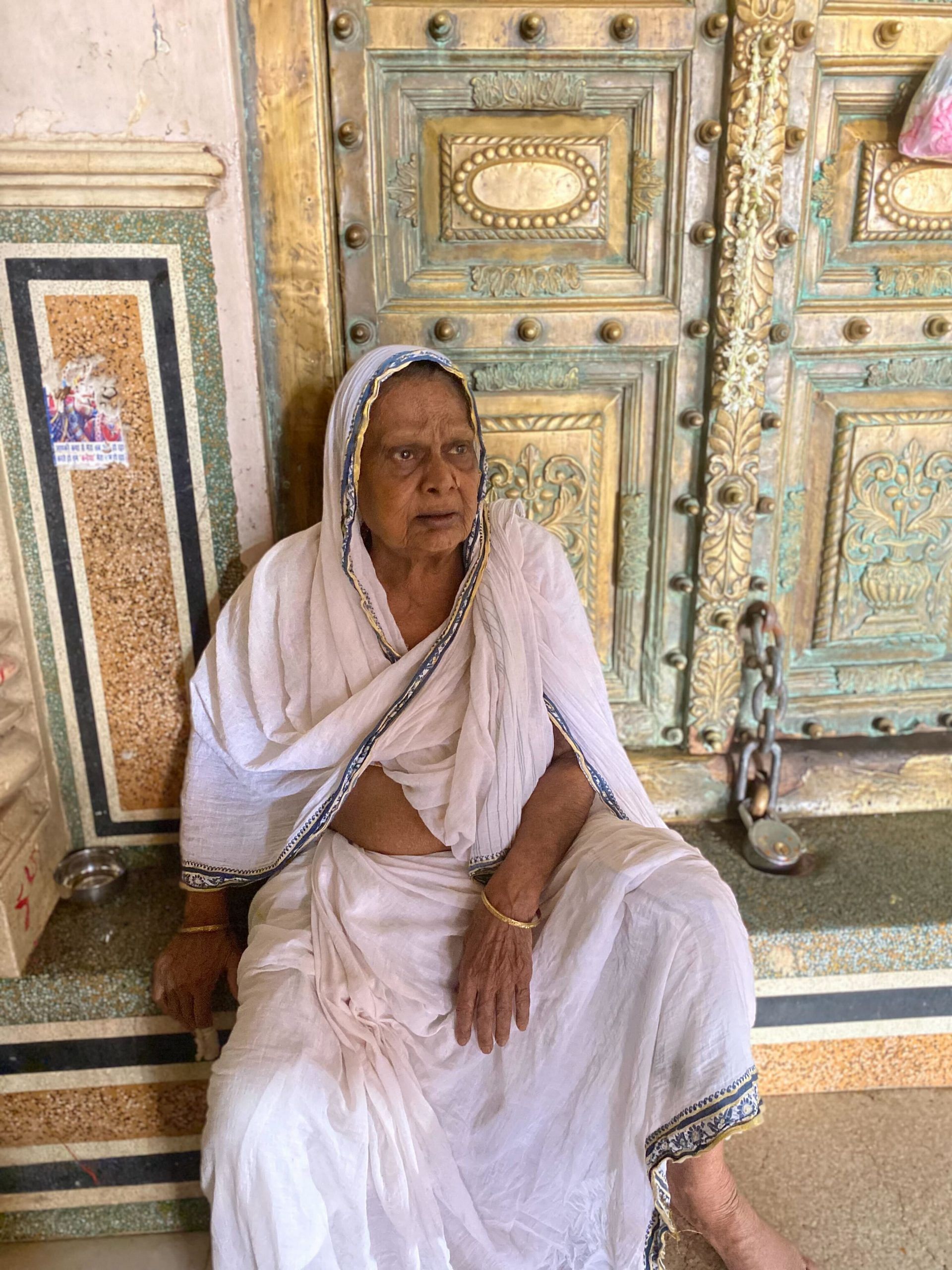
“I am a woman and there is no one in my family, that’s why it is easy to target me,” Maya Devi says, sitting in a chair wearing a plain white saree. She is serving in place of her husband Harivansh Lal Goswami, who died in 1999. Maya Devi is his second wife. He didn’t have any children so all the rights to conduct prayers at the temple passed on to Maya Devi. But as soon as she began her work at the temple, Harivansh Goswami’s extended family started calling her a fraud.
Devi says, “It was my right to take this seat. I have been serving goddess Radha Rani for over 60 years. Now that I have a chance to be close to her, why should I give it to somebody else?”
Family members claim that her late husband’s nephew is the rightful heir to the position, and have filed a complaint in court that she has rushed to usurp the post by deceit.
Although in some southern states like Karnataka and Kerala, a few women are working as priests, it is still rare in the north. The temple town of Mathura is the hold of male priests. Last year in Tamil Nadu, chief minister MK Stalin said that women and non-Brahmins who got the education of priesthood should be posted in temples.
Also read: Khasi to Apatani—Women photographers in Northeast are coming together, turning the lens
Changemaker sevadar
Maya Devi is already making changes in the Radha Rani temple. There are more women now. Her nephew’s wife Hema Sharma makes sure that everything runs smoothly, keeps an eye on the crowd and the prasad distribution.
Most importantly, people have noticed that Devi now allows devotees to get up close with the idol.
“This is the first time I got to see Shree Ji this close,” says Ekta who brought her child to the temple on his birthday recently, using the popular name for the Radha Rani idol. “I don’t know if this is because of the woman priest, but it feels good that women are building spaces everywhere. I call this empowerment.”
Ekta fought the crowds to get close and a female priest helped her.
But big changes bring big pushback too. Maya Devi’s relative Rasbihari Goswami and his supporters protested outside the temple for a few days and a lawsuit followed in May. The police had to get in to make the protesters leave.
Devi hasn’t been able to conduct the prayers at the temple, men still do. But she does take all the decisions now related to darshan (viewing), prasad (offering) and funds. The battle now is to deny her these decision-making powers as well.
“I don’t see anything wrong here. If the society accepts her as the wife of Harivansh Goswami, then she has a right to be there. As long as that person who is serving in the temples is a Goswami, everything is fine,” says Chhotu Goswami, a Mathura priest.
Also read: Bollywood isn’t dead. But there’s panic everywhere in Mumbai
Labyrinthine inheritance
Few people are convinced that everything is fine. It’s a complex story of temple tradition, ambition and a joint family drama. And an 80-year-old woman is proving a bit too inconvenient for everybody.
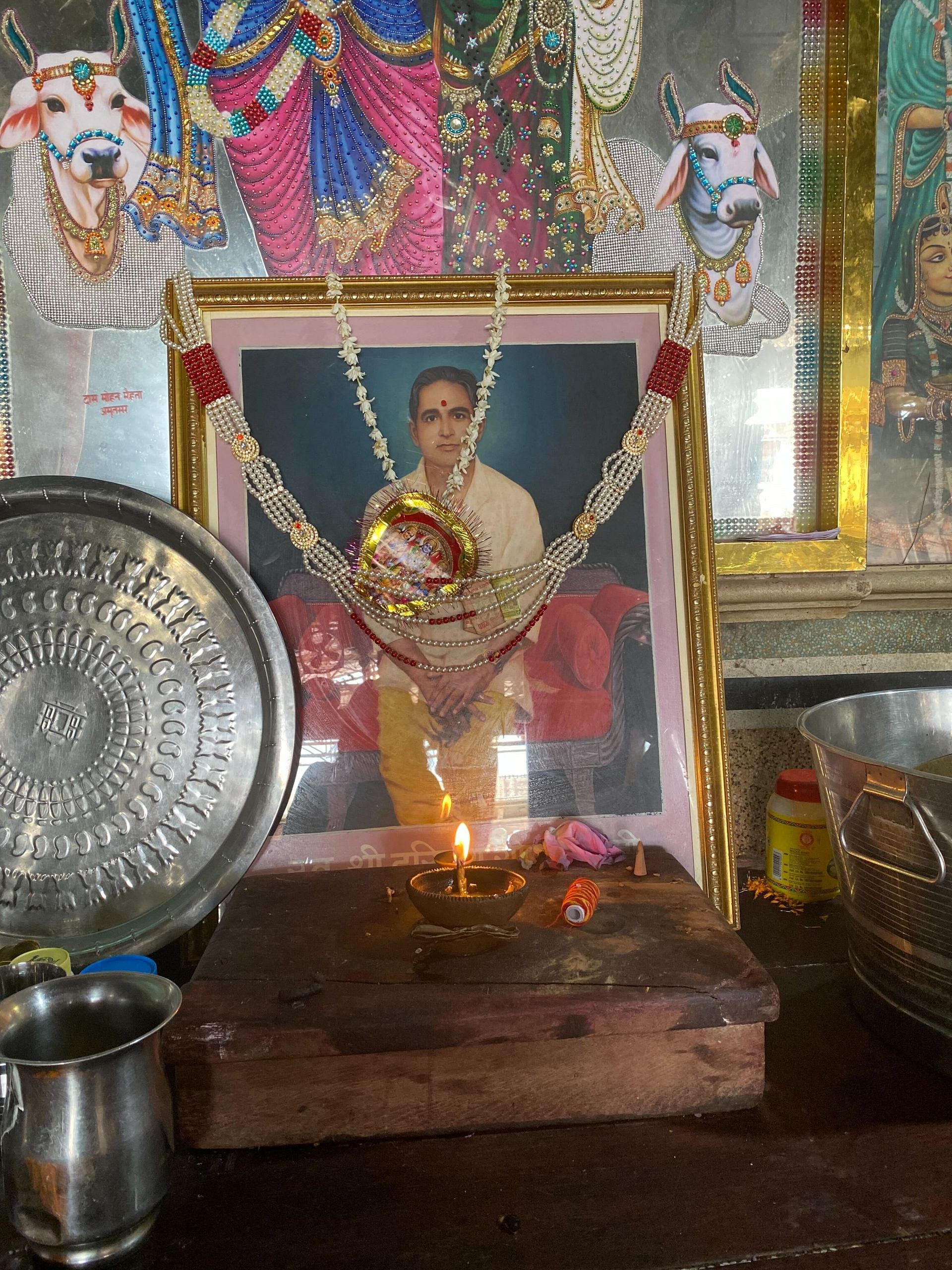
Maya Devi’s husband Harivansh Lal Goswami was supposed to work as the sevadar (serving priest) of the Radha Rani temple from 27 April 2020, as part of an elaborate tradition of succession chalked out for and by the male members of the family. Only the men of the Goswami community are allowed to become the sevadar of the temple, and only one family has had that right. The family is divided into three parts and each member gets a year-long shot at being a priest.
When Harivansh died in 1999 the family decided to appoint his brother’s grandson Rasbihari Goswami when the time came in 2020.
There was no dispute in the family regarding the appointment of Rasbihari and he had even assumed charge on time in April. And then Maya Devi claimed to be the sevadar of the temple, as the widow of Harivansh. She moved to the lower court at Chhata within a fortnight, which ruled that she should be the priest.
Rasbihari appealed the matter at the Chhata Court, which then reversed its judgement and considered the appointment of Maya Devi to the post of sevadar as wrong. The court said she had taken over the post with the wrong intention. Rasbihari’s family members also objected saying that Maya is neither a man nor a Goswami, and therefore, cannot be allowed to be sevadar. The family also claimed that they had never really accepted Maya Devi as Harivansh Goswami’s wife and accused her of making false claims.
After that Maya Devi reached the Mathura court to get the Chhata Court order dismissed, but didn’t succeed.
“She has no right to claim the seva, but she did some setting even after the court declared Maya Devi had taken over the post with the wrong intention. The police did not make her leave. I am going court to court for justice,” says Rasbihari, who recently moved the Allahabad High Court against Maya Devi.
His lawyer Ashutosh Sharma says that the Chhata Court of Mathura has ruled in their favour but Maya Devi is not ready to leave the temple service.
“An application under section 144 of civil procedure code (CPC) has been filed with the civil judge of the Chhata Court, in which we have requested the police to intervene,” says Ashutosh Sharma.
The farmland surrounding the Radha Rani temple has always belonged to the Goswami family in Barsana and only those whose names are registered with the land can be priests. The family members divide the service time in a labyrinthine manner among themselves – some get 15 days, some get half a day, and some just three hours.
Ashutosh Sharma says that Maya Devi got the temple service based on her name in the land papers, which itself was based on wrongful litigation.
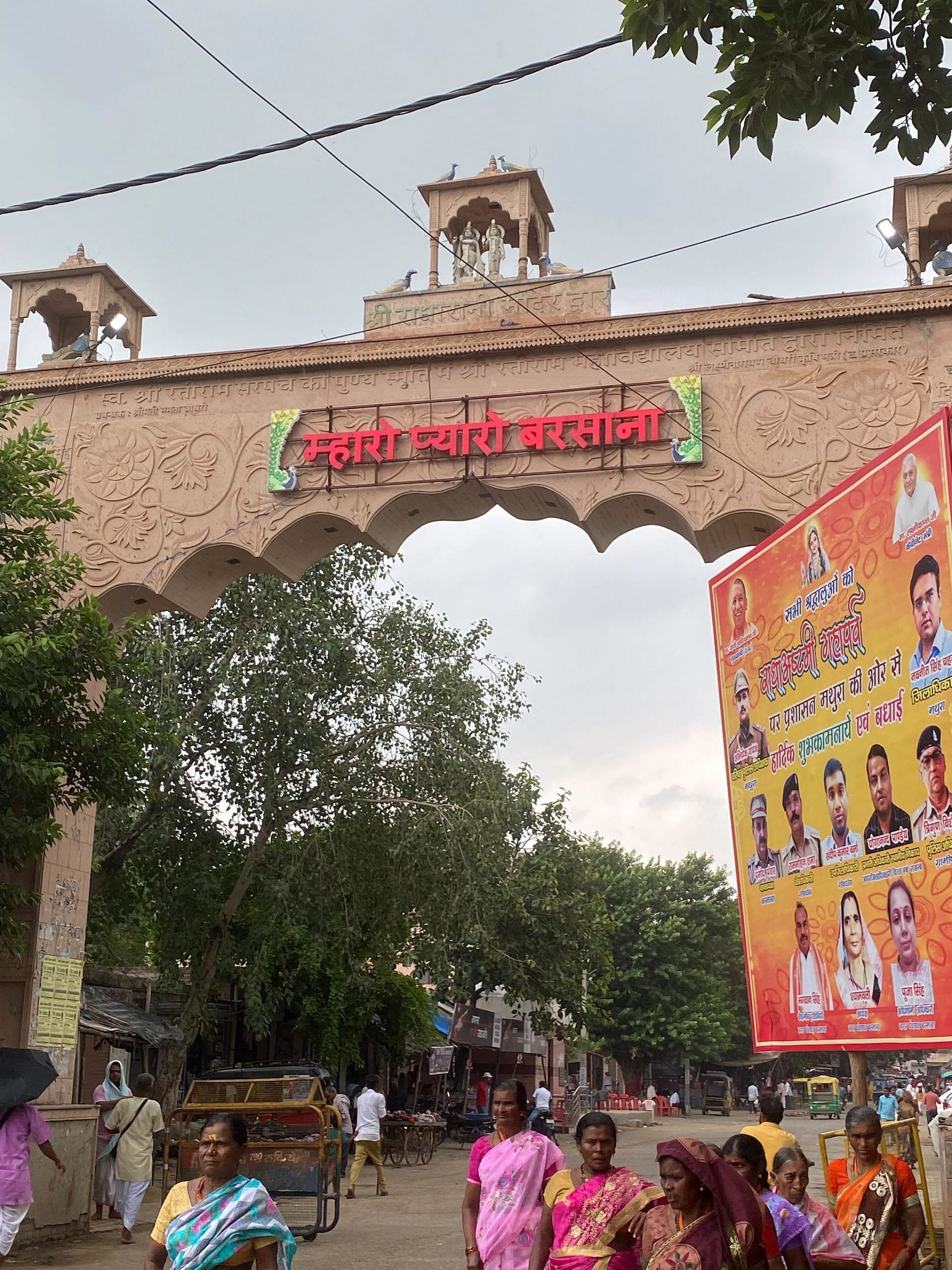
400-year-old temple
Radha Rani temple was built in the region Radha belonged to, who is known to be Krishna’s beloved. This 250-step temple was built about 400 years ago. The Radha Rani idol is viewed from a hall with huge, hanging chandeliers amid heady, devotional chants of Radha Rani ki Jai. The bejewelled three-feet golden coloured idol is made of eight metals (astadhatu) and is accompanied by a wide-eyed, black-coloured Krishna idol, say priests. Their clothes and jewellery are changed twice a day by the priests, and they are fanned during the scorching summer months and placed on a swing in July and August.
The temple is looked after by the descendants of the three Goswami family members called Sevayat Baba Thok, Lakshman Thok, and Akshay Ram Thok of Goswami family.
Also read: The many shades of grey in Iran’s hijab war show it’s not just personal freedom vs theocracy
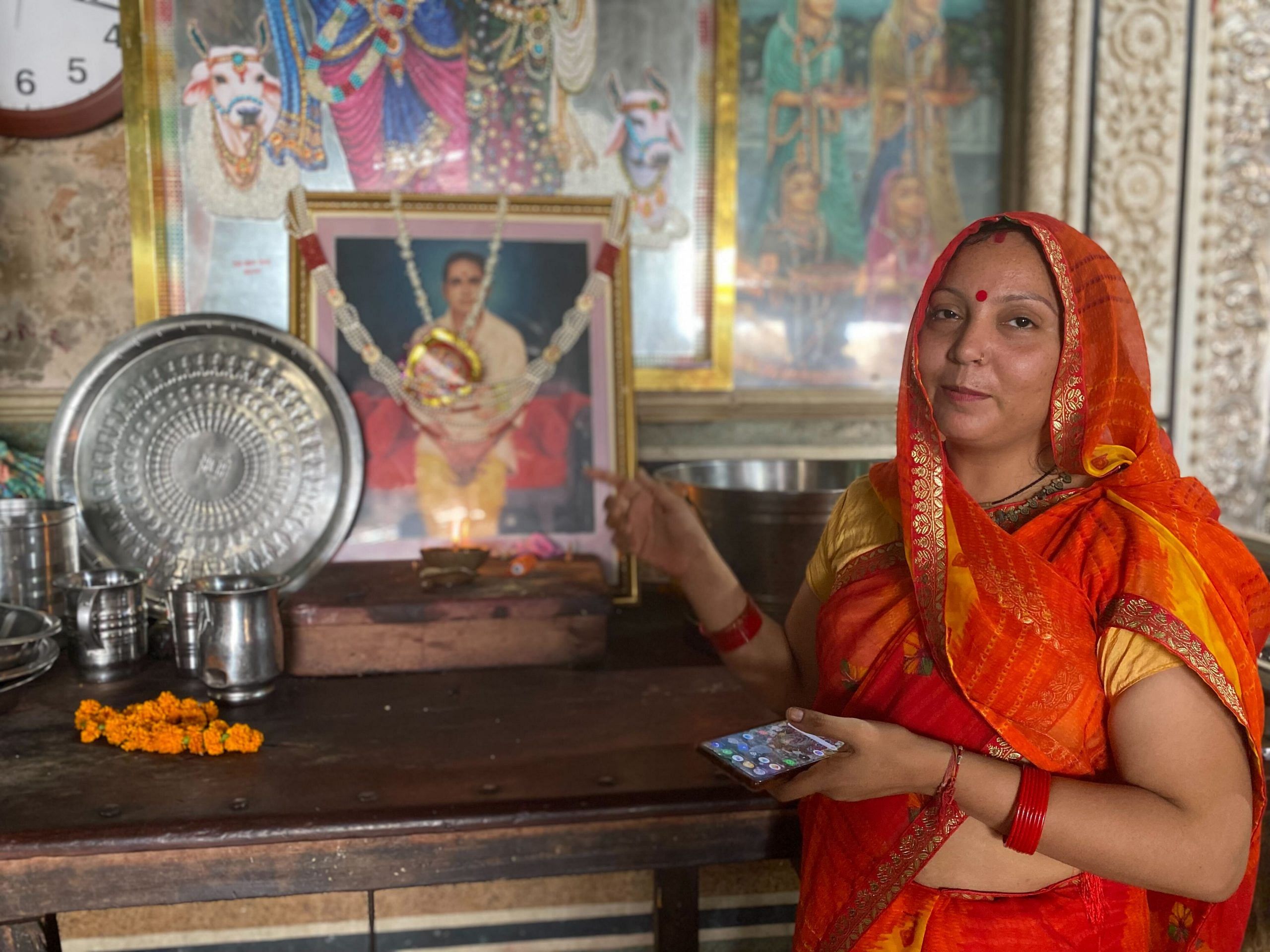
A lonely fight
Not everyone is against Maya Devi. There are supporters too. Hema Sharma, the wife of her nephew, takes care of Devi and helps her with temple work. She says that Maya Devi’s health deteriorated several times during this entire legal dispute. Maya Devi gets nervous in such situations and her blood pressure shoots up.
“She did not do anything wrong, after her husband all rights came to her, she is taking what is hers,” says Hema Sharma, now the Gosain of the temple. She says it is one of the highest posts and she collects the money that comes in.
There is a small hut in the temple in which Maya Devi lives, but due to her recent health issues, Hema helps her commute from the village to the temple every day. Only the priests selected by Maya Devi dress the idol of Radha Rani and perform aarti throughout the day.
“Mayadevi’s arrival has given hope to many women, the doors are open to reaching the post of sevadar. Seeing her, other women are getting inspired,” says Hema Sharma who does the work of distributing prasad among the people after the aarti.
A priest in the temple said on the condition of anonymity that since Maya Devi took over the service, the number of women in the temple has increased. From swinging the idol of Radha Rani to distributing prasad, women are seen participating in everything.
Also read: I visited the land of Babur and Timur, Uzbekistan’s ‘national hero’
Fighting on multiple fronts
The court tussle, however, is far from holy.Durgesh Goswami, a relative of Rasbihari, explains that even with the court order in his hand, he is facing injustice. “The civil court has held Maya Devi’s service to be wrong and has said that she has reached here with the wrong intention, but despite that, the police are not removing her from the temple.”
Rasbihari who claims to be the rightful sevadar of the temple is currently in Allahabad trying to get Maya Devi’s service dismissed through a court order.
“The police asked Rasbihari to get a written letter from the court to remove Maya Devi from the temple,” says Durgesh.
“Maya Devi has corrupted the temple system. Very few people were allowed to go near the idol of Shri Ji [Radha Rani], but now everyone is allowed,” says Mohan Goswami sitting with Durgesh, also a cousin of Rasbihari.
Maya Devi sat on the stairs of the Radha Rani temple on a blazing September afternoon. She is fighting on multiple fronts. And time and health aren’t her best friends right now. She looked at the distance—anger written all over her face.
“If people want to see Radha Rani Ji closely and I make that happen, what is wrong with that?” asks Maya Devi. “People fear positive change, they just want to mock me, but they cannot stop me. I will fight in court, and not give up what’s mine.”
(Edited by Ratan Priya)


